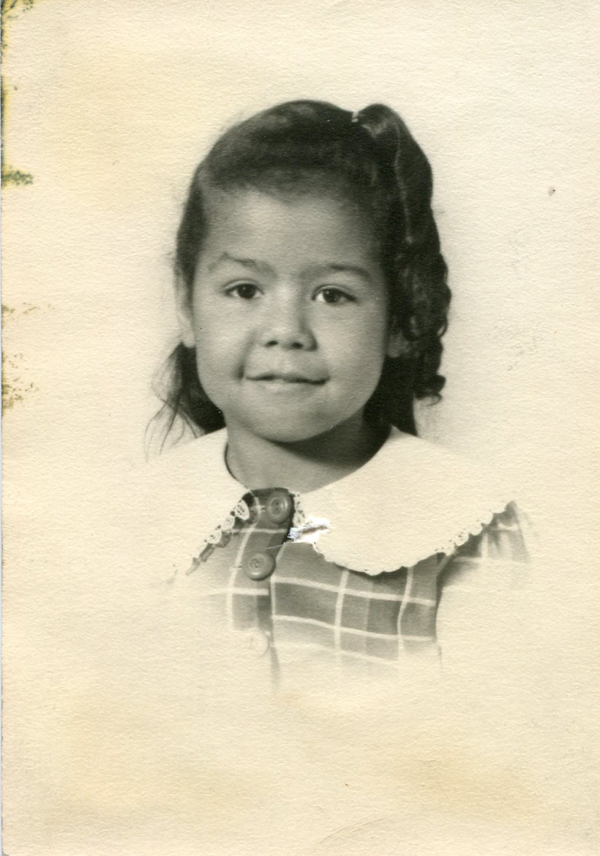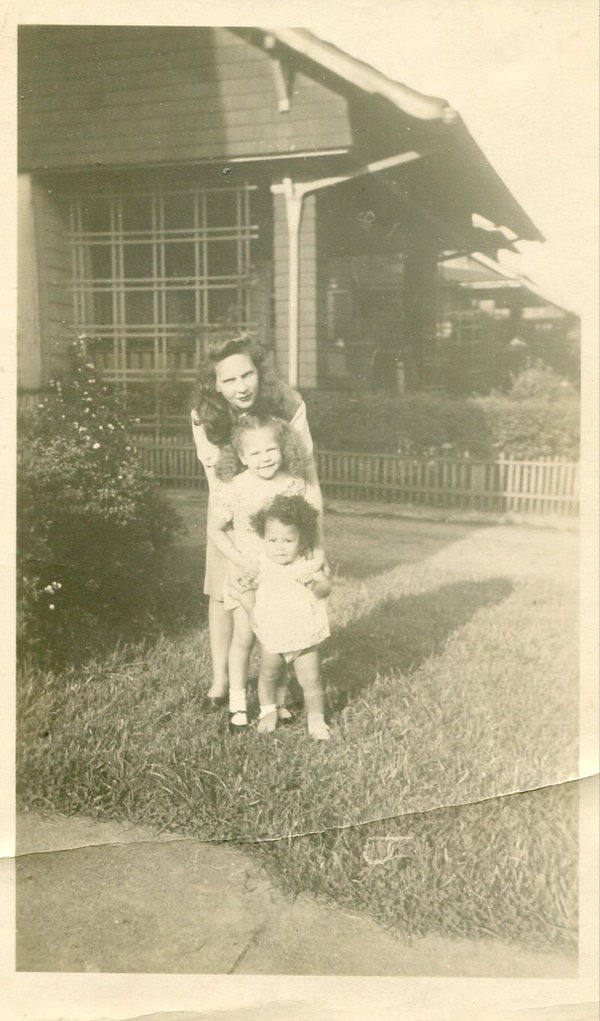
In 1944, the year before I was born, my parents bought their first house in Cleveland’s Glenville neighborhood. The sellers were Jewish. By the time I had any recollection, our entire street was Black, mostly middle-class workers and some professionals.
Through my early teenage years there were still the vestiges of Jewish businesses on 105th Street — dry good stores, drug stores, a furniture store and the like. By the time I graduated from high school in 1963, all the Jewish businesses and houses of worship were gone. The temples were converted to Black churches.
Since I went to Catholic school, I had little contact with the transition from white to Black in the neighborhood public schools. But when my older sister made her first communion at St. Thomas Aquinas School, located at 92nd and Superior. In 1950 there was only one other Black student. My sister and the other Black student became lifelong friends.

By the time I started at the same school in the early 1950s there were a few Black students. By the time I graduated from St. Thomas in 1959 there were six or eight Black students. I still go to church with two of my elementary school classmates and stay in touch with two others.
I was friends with the white students in class, but I was never invited to a birthday party or to their homes. Maybe I could chalk that up to the fact that where I lived was some distance from my school, so I didn’t really live in the same neighborhood as my classmates. Other than the girls that went on to Notre Dame High School with me, I never saw or had any contact with any white elementary school classmates.
At Notre Dame Academy — right across the street from my elementary school — there were always six or eight Black girls in my class, many of whom I stayed in contact with after graduation. But other than a group that reached out to me for our 50th class reunion, I never had any contact with any white classmate after the day we walked across the graduation stage. The one exception is a woman that contacted me when I served as a judge of the Cleveland Municipal Court. She was looking for a job.
By the early 1960s my parents were looking to move from the Glenville area. Our family had outgrown the house and the neighborhood was decidedly blue collar. I remember overhearing conversations about attempts to buy a new house and driving through neighborhoods and asking my mother why we couldn’t buy a house in this area. Her response was “They won’t sell to us.”

There were a couple of houses that we looked at and I dreamed of moving in. But we would find out that the deal had fallen through. I remember one house in Beachwood that we all really liked, and we thought it was a done deal. The seller was a rabbi and I remember him being charming and friendly. But at the last minute he refused to sell to us.
Finally, in the summer of 1964, my father, who was an insurance agent but had a real estate broker’s license, made a deal with a couple in Beachwood to buy their house. A Jewish lawyer who lived next door to our new house attempted to gather the neighbors to buy the house rather than have it sold to my family. The other neighbors were not interested. When we moved in all the neighbors, except one, were friendly and welcoming. There are some that I still stay in contact with.
While my story is probably typical of many Black families who faced the challenges of restrictive covenants, redlining, and simple racial prejudice when seeking better housing and schools in the 1950s and 60s, Washington Post reporter-turned-author Laura Meckler tells of her experiences and the experiences of residents of Shaker Heights, Ohio, during the same time period in her new book Dream Town — Shaker Heights and The Quest for Racial Equity (Henry Holt and Co., New York 2023).

Hers is the story of an affluent suburb of about 29,000 people just east of Cleveland. It was the brainchild of the Van Sweringen brothers who, in the early part of the 20th century, sought to set up a model community with no bars, no multiple family dwellings and no industry, with restrictive covenants that barred Jews and Catholics and, of course, Blacks.
Retired Common Pleas Court Judge Burt W. Griffin, who grew up in Shaker in the 1930s and 1940s recalls that the focus of city leaders in Shaker was to keep out Jews and Catholics. To demonstrate this, he points out that there are no Jewish houses of worship in Shaker. St. Dominic’s, the sole Catholic Church in Shaker, was not founded until 1950.
But by the 1950s the United States Supreme Court had barred restrictive covenants as unconstitutional. Blacks who had become more affluent sought better housing and schools. In a unique experiment that grew out of the Ludlow neighborhood, Black and white families came together to maintain an integrated neighborhoods despite real estate agents who for the sake of sales encouraged white flight. Mortgage companies made it difficult and sometimes impossible for Black and white families who sought to maintain racial equity in the neighborhoods.
The first third of the book deals with this unique coming together of Black and white residents that encouraged white buyers and discouraged Black buyers, often steering prospective Black buyers to other suburban neighborhoods, raising the question: do the ends justify the means? While other suburban neighborhoods flipped from totally white to totally Black within a relatively short period of time, Shaker maintained a white majority. Friendships developed between neighbors. Children played together. Shaker became the subject of discussion in national magazines, basically saying “See, integration can work.”
The other two-thirds of the book deals with the Shaker school system which prides itself on academic achievement but often fails in the area of equity between Black and white students’ academic achievements. Advanced placement classes tend to be all white. Black students make up most of the lower achieving levels in the school. This section of the book grew out of a lengthy article that the author wrote for The Washington Post regarding a dispute between a Black student and a teacher in an AP English class, which raised questions about who was in these advanced classes and who was not, and why.
Like the first part of the book, Meckler tells her story using essays on individuals who were involved in the housing initiative to maintain an integrated community. She continues this pattern by focusing on school administrators, parents and students, and their experiences and their plusses and minuses. While the section on housing seemed to me to flow more evenly, maybe because I personally knew several of the people in that section and I had more personal knowledge about housing, the section on education seems to be more disjointed, leaving it up to the reader to decide who was right; which administrator was wrong; which administrators were forced out; who was well-intentioned or who made the school system better or worse. She delves at length into the voluntary busing plans that the city implemented to make classes more homogeneous — not always coming up with a definite conclusion.
One thing that impressed me about the educators was the commitment of individuals who spent their time and effort to keep the Shaker student body engaged and interested. But Meckler does not provide an answer, if there is one, as to why Black students, though scoring better than students in Cleveland schools, are routinely absent from advanced placement classes — even though their rate of college admission is higher than other school districts.
Meckler raises more questions than she answers. By stopping the white flight that happened in other suburbs and keeping Shaker an integrated community, was the greater community served? If this same type of movement had occurred in East Cleveland, would East Cleveland now be a more viable community and economically sound community where people want to live? Should we use our 21st-century eyes to critique what people did in the mid-20th century?
Dream Town will have a unique appeal to people who grew up in Cleveland during this era. My question is whether the book will have a universal appeal. Will Mecker’s nuanced questions have sufficient appeal to a universal audience outside greater Cleveland not familiar with the neighborhoods and schools? And as she asks at the end of the book, would a Black person dealing with the same empirical data come away with the same perspective?
Dream Town is not always an easy book to read. For Black readers, especially of my generation, it will bring up painful memories of racial slights and bigotry. White readers will be forced to question their racial attitudes. Readers, both Black and white, must question themselves and ask whose side they would have been on had they been faced with the same situation. But sometimes it’s necessary to open old wounds to create new growth. That’s what Meckler does. And she leaves it up to the reader to decide who was right and who was wrong.

C. Ellen Connally is a retired judge of the Cleveland Municipal Court. From 2010 to 2014 she served as the President of the Cuyahoga County Council. An avid reader and student of American history, she is a former member of the Board of the Ohio History Connection, and past president of the Cleveland Civil War Round Table, and is currently vice president of the Cuyahoga County Soldiers and Sailors Monument Commission. She holds degrees from BGSU, CSU and is all but dissertation for a PhD from the University of Akron.
2 Responses to “POINT OF ORDER: Is Shaker Heights a Dream Town? by C. Ellen Connally”
Maurer, Mel
My Dream Town was East Cleveland which destroyed itself with White Flight.
James Chin
The 1960s, much like today, were highly chaotic times. At that time, Cleveland was one of the most segregated cities in the U.S. As a child of Chinese immigrants, I entered the 6th grade at Moreland school in the fall of 1961 after attending A.J. Rickoff for five years where I witnessed massive white flight. I have not read Dream Town although I have read several articles about the book. I remain a strong Shaker supporter where I received a strong education & benefited from the tracking system as did my 4 children who followed me. Now I am proud that 2 of my grandchildren attend Shaker. Integration is a huge huge challenge, particularly in a city like Cleveland. I am certain that it was a arduous & bumpy road with many challenges. I can cite numerous success stories. Ted Mason, one of my classmates, may have been the first Black student to attend Shaker from kindergarten to high school where he was one of the top students. A few years ago I heard that 2 Black journalists had won Pulitzers that year which apparently is a relatively rare occurrence. It was my understanding that both were from Shaker. Today I am proud when I go to the Van Aken district in the evening & witness a diverse community of families. I remain a strong Shaker advocate.
Jimmy Chin